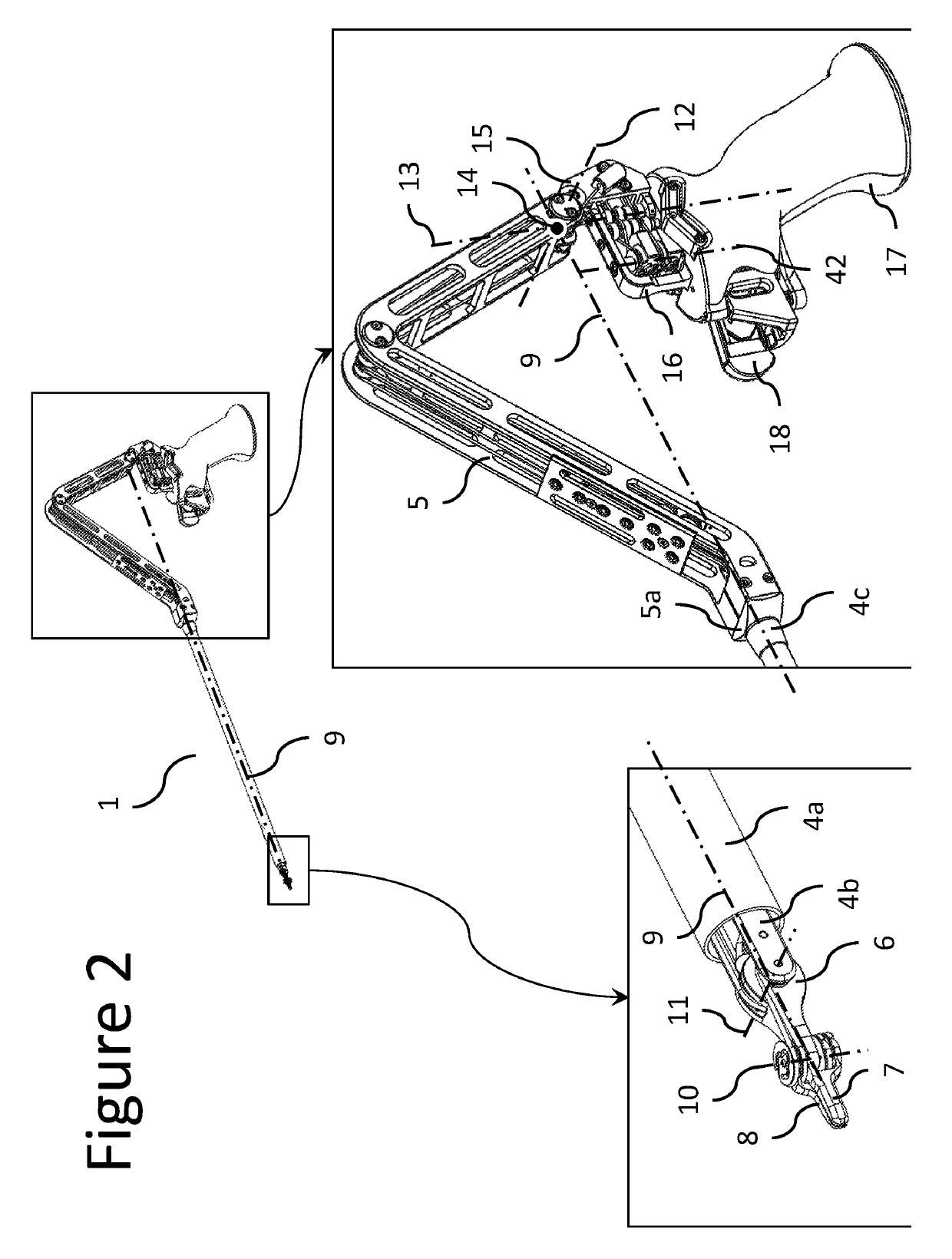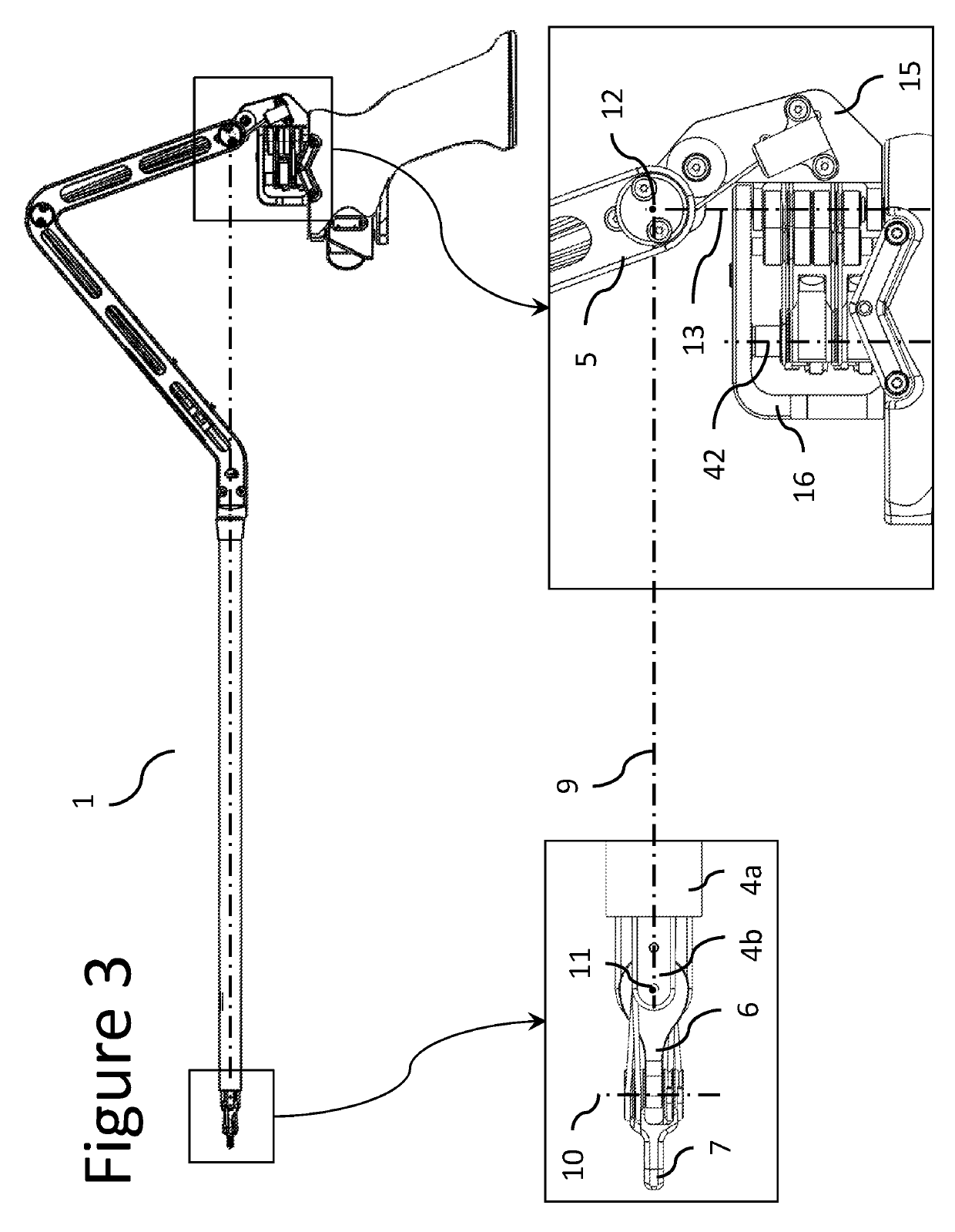Articulated hand-held instrument
a hand-held instrument and articulation technology, applied in the field of remote actuation mechanical systems, can solve the problems of long recovery period, long recovery period at the hospital, and substantial blood loss, and achieve the effect of greater dexterity and ergonomy
- Summary
- Abstract
- Description
- Claims
- Application Information
AI Technical Summary
Benefits of technology
Problems solved by technology
Method used
Image
Examples
Embodiment Construction
[0054]The articulated instrument 1 of FIG. 1, according to an embodiment of the present invention, is intended to be used in minimally invasive surgical procedures.
[0055]One of the key features of this type of articulated instrument 1 lies in its master-slave architecture, which enables the replication of the user hand movements, on a proximal handle 3 (the master), by a distal end-effector 2 (the slave) inside the patient's body.
[0056]According to FIGS. 1, 2, 3 and 4, the articulated instrument 1 comprises: i) a proximal handle 3 having a number of handle links 15, 17, 18 interconnected by a plurality of handle joints, represented by rotations over the axes 12, 13, 42; a ii) a frame 5, structurally connecting the proximal handle 3 to the distal portion of the articulated instrument 1; iii) a distal end-effector 2 having a number of end-effector links 6, 7, 8 interconnected by a plurality of end-effector joints, corresponding to the handle links, and represented by rotations over th...
PUM
 Login to View More
Login to View More Abstract
Description
Claims
Application Information
 Login to View More
Login to View More - R&D
- Intellectual Property
- Life Sciences
- Materials
- Tech Scout
- Unparalleled Data Quality
- Higher Quality Content
- 60% Fewer Hallucinations
Browse by: Latest US Patents, China's latest patents, Technical Efficacy Thesaurus, Application Domain, Technology Topic, Popular Technical Reports.
© 2025 PatSnap. All rights reserved.Legal|Privacy policy|Modern Slavery Act Transparency Statement|Sitemap|About US| Contact US: help@patsnap.com



